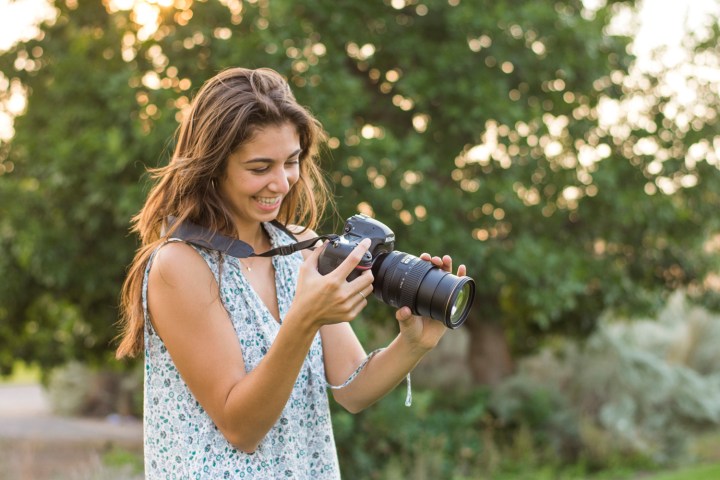
Think high-resolution cameras are slow? Think again
For cameras, the bigger the files, the longer they take to record. But a handful of different advances are making that a thing of the past. This year, more than one brand has worked to mix both high resolution and fast burst speeds into a single camera. The Nikon D850 can shoot 45 megapixel files at 9 frames per second if you add the battery grip, while the Sony A7R III, seen below, hits 45 megapixels at 10 fps. Autofocus is also improving to keep up with those speeds along with enhanced accuracy, like the AF system in the Sony A9. The megapixel count and burst speed aren’t unheard of on their own, but picking up a camera with megapixels in the 40+ range no longer means slow bursts.
Electronic viewfinders catching up to optical
Mirrorless cameras are no longer the little siblings to DSLRs, and one of the ways camera makers having brought them close to par is with refinements of the electronic viewfinder (EVF). The electronic type already had some advantages with the ability to use focus peaking or preview special effects, but the EVF on the Sony A9 has one less con going for the mirrorless type because the viewfinder doesn’t black out as the shot is being taken, allowing you to continue following the action with greater accuracy. Previously, a mirrorless camera’s sensor could be used to record the image or to show you a preview, but not both simultaneously.
HEIF files mean photos take up less space
This year introduced a handful of smartphone photography features, such as simulated studio lighting in the updated portrait mode in newer iPhones, and the Google Pixel 2’s camera effects that don’t require a second lens. But one feature to get to know is HEIF and HEVC. These file types (HEIF for photo, HEVC for video) take up less space, so you’re less likely to get that annoying pop-up that says there’s no space left on your phone. HEIF and HEVC aren’t new, but Apple’s adoption of the file formats in iOS 11 is bringing them into the mainstream. GoPro is using HEVC in the new Hero6 Black, and Adobe has added support in its software as well.
4K outgrows time limitations
Overheating is an issue that limits cameras from recording long videos in high resolution. But the Panasonic GH5 can record in 4K at 60 fps until the battery dies or the memory card fills up. And if that isn’t enough, Panasonic has since launched a new flagship, the G9, that has all of that and it matches the impressive 6.5 stops of stabilization Olympus offers in its Micro Four Thirds cameras.

The stacked sensor grows up
Sony has been making stacked sensor compacts for two years now, but in 2017, that concept is all grown up and available to professionals. The Sony A9 is the first camera to bring that stacked concept into a full-frame sensor. By dedicating a layer to gathering the data and another layer to processing the data, the stacked sensor achieves around a 20x speed boost. The new sensor design probably hasn’t reached its peak in 2017, either — Canon just patented a variation that will also increase autofocus speed, while the feature could also migrate down into smartphone cameras as well.
That lovely autofocus joystick is trickling down to more models
The autofocus joystick is a very simple control scheme, but one that offers a serious improvement in the shooting experience. The joystick isn’t a new concept — previous appearances include the Canon 5D series and Nikon D500, but the tool is starting to trickle down to other cameras, like the enthusiast-oriented Fujifilm X-T20. It’s one of those features we wish was standard.
AI in photo editing is starting to actually get useful for pros.
Artificial intelligence in photography isn’t anything new, but it’s becoming really good and useful. We’re starting to see more AI-powered features that are actually helpful to photographers, and we expect that trend to continue into 2018. Examples: Lightroom CC can now auto-tag images using Adobe Sensi, so you can easily search through those large libraries. Another option, still in beta and available only in the online version of Lightroom, is using AI to help cull images to find the best shots. Adobe isn’t done either: The software giant recently previewed a smart selection tool for Photoshop that uses AI to make those tedious selections simpler. In the mobile space, we’re already seeing companies like Apple and Google using AI and machine learning to take better photos, as well helping with photo management.





